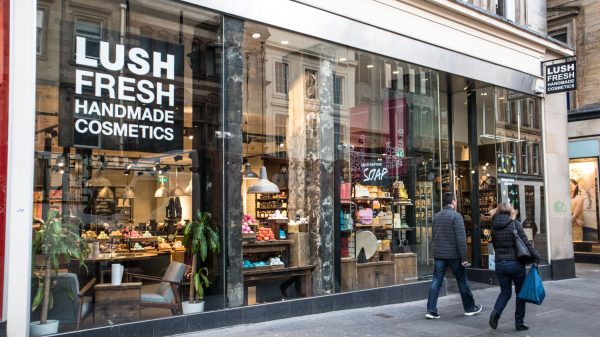For many, Ocado is best known via its fleet of over 1,700 colourful delivery vans which have helped to carve the image of the online grocery giant over the course of its 22-year history.
However, the company operates another business alongside its online grocery operation: UK-based technology division Ocado Group.
For Ocado customers, this tech division is far removed from the crates of fresh food arriving on their doorsteps, but it plays an intrinsic part in the brand and its ability to deliver its service. Ocado Group provides end-to-end online grocery fulfilment solution to some of the world’s largest grocery retailers and holds a 50% share of Ocado Retail in the UK, along with its partner in the joint venture, Marks & Spencer.
The group listed on the London Stock Exchange in 2010 and is now a member of the FTSE 100.
On paper, the strategy is sound. The company launches a two-pronged assault on the retail sector, providing the tech solutions for its own ecommerce grocery operation and others’. However, the company has struggled over the course of the past 12 months, with shares slumping as it continues to invest heavily in tech.
In the company’s first quarter results in March, it declared retail revenues fell by almost 6% as grocery shopping habits returned to pre-pandemic levels after the surge in online shopping dissipated.
“Ocado is at a major crossroads – is it a tech company or a retailer? Unfortunately, both are loss-making and neither are in vogue with investors,” Edison Group chief executive Fraser Thorne said.
“The retail business is facing major economic and consumer headwinds while technology investments are seeing their present value diminish in the face of rising interest rates.”
The markets also appear confused as to what the future hold for Ocado, with the value of the company’s shares dropping by around 60% over the past two years. So where should Ocado focus its attentions in the future?
Ocado Retail
Ocado Retail is undoubtedly the most recognisable side of the business, reaching over 75% of British households and shipping over 381,000 orders every week.
The retail division is also responsible for Ocado.com, a customer’s first port of call and Zoom by Ocado, which is essentially the company’s answer to on-demand delivery. Zoom stocks a wide range of Ocado products for its customers and delivers them in a similar fashion to the quick-commerce giants such as Deliveroo or Gorillas.
Ocado has inked deals with plenty of big retailers to provide its customers with what it believes is the highest quality of goods, working with Waitrose in the past before moving onto current grocery supplier Marks & Spencer which is now a 50% partner in the business.
According to the latest market share data from Kantar, Ocado only claims a 1.8% share of the UK’s total grocery market. So for all of its reputation as a leading online grocer, it doesn’t actually hold much influence over the sector when pitted against grocer leaders Tesco and Sainsbury’s.
The retail business has had a rough ride so far this year, with H1 revenue for 2022 falling by 8% to £1.1bn year-on-year. It is working against tough comparatives as the online grocery market continues to readjust post pandemic and in the face of rising inflation, but remains a far cry from previous highs.
It’s important to note at this point that Ocado Retail, while being the most prominent arm of the business from a consumer perspective, is actually just one of Ocado Group’s 11 different solutions partners.
Ocado Group
Unlike its retail partner, Ocado Group is a huge player in its own right. Over the past two decades, the Group has been innovating for grocery online, investing in a wide technology estate that includes robotics, AI and machine learning, simulation, forecasting and edge intelligence.
Its Customer Fulfilment Centre’s (CFCs) are the cutting-edge warehouses it builds for the grocery companies it has partnered with around the world, from the UK to Australia, one of which is Morrisons.
The majority of these warehouses are highly automated, with high-speed robots move around picking products for customer orders onto of a 3D grid of crates which are loaded with items.
Each warehouse contains usually over 1,000 robots which coordinate in a swarm-like fashion to fulfil orders.
The robots are able to work together to ‘dig’ for the crates, moving crates out of the way to collect one buried lower in a stack. The movement of the robots and the storage location of the crates is managed and optimised by a central ‘control system’ using artificial intelligence. This means that Ocado can pick an impressive 50-item order in just minutes.
READ MORE: Ocado names Mark Richardson as CEO of new tech venture
The company’s tech also extends to machine learning-based fraud detection and customer service systems; forecasting and routing systems.
Ocado has two of its hi-tech warehouses based in Andover and Erith. The Erith site is capable of processing 220,000 orders a week, with up to 3,500 robots running on its grid at a time.
At the beginning of the year, Ocado unveiled new “game-changing” tech to enable the company and its partners to meet the full range of customer missions faster and with lower operating costs. It will also help the grocer enable short lead time deliveries for a larger proportion of sales.
Ocado stated at the time that the new developments would be one of the most significant steps forward in the company’s history, declaring that its new Ocado Smart Platform (OSP) was “the fastest, most flexible, most sustainable and most cost-effective suite of solutions for an operating online grocery business”.
In order to push forward with its tech plans, Ocado appointed its chief operating officer Mark Richardson as chief executive of a new business venture in July. The appointment was aimed at extending Ocado’s product offering into new market sectors alongside grocery.
Ocado Group was worth $9.22 billion as of 17 August 2022.
So, tech firm or retailer?
While there is a clear distinction about the two different companies’ exact operations, the overlap between the two is clear and obvious.
“The Ocado Group is made up of associated businesses all of which focus on the future of food; its production, distribution and retail. This remains a long-term global growth opportunity,” Thorne added.
He believes that while the structure of the two companies has worked to a certain degree, it may be worth further separating further.
“The group structure is starting to act as a restraint as it clouds the outlook by layering on different scenarios. There is a growing argument that separation into two independent entities will benefit both, provide investors with greater clarity and act as a catalyst for value creation. Something which is at the forefront of the minds of those who supported the recent raise at 795p, 6% higher than the current share price.”
Retail technology expert Miya Knights expressed concern over the current business model of the company, citing Amazon as an example.
“I always say, ‘Amazon is a tech company first and a retailer second’. That’s why it can afford to run its retail business at a loss.
“I wouldn’t say the same for Ocado. It’s a grocery retailer (where margins are even thinner than GM) that happens to resell its tech. However, I don’t think trying to do both at a profit is feasible, hence the reason it didn’t make a profit last year, despite it being the biggest ever for online retail due to the pandemic.”
Both the tech and grocery divisions are important to the company, but – despite the heavy investment into the Group from a technology perspective – the end goal is to provide for the retail sector – which it is currently struggling to do on both fronts.
Many are calling for Ocado to focus on one of its divisions instead of spreading itself thinly across both as economic headwinds start to batter the sector, however it appears to be steaming ahead with its strategy to serve customers either directly from the retail arm and indirectly from its tech division.










